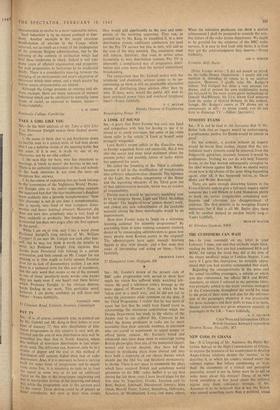PAY T V SIR. It is, of course, completely true, as
pointed out by Mr. Gabriel and Mr. King in their letters in your issue January that wire distribution of tele- v programmes in this country is very well de- veloped and the cost of wire distribution may well be somewhat less than that in North America, where this method of television distribution is less exten- sively used. The difference can, however, only be in a Matter of degree and the cost of this method of distribution still remains higher than that of radio distribution. Also, if it is necessary to have a varying tariff for some items of programme and to supply some items free, it is necessary to code or to treat the signal in some way or to put an additional signal on the ljne at the programme originating end and to incorporate devices at the receiving end which Will relate the programme seen to the amount paid ?y the viewer. These devices could he of greater or lesser complexity, but even at their most simple
they would add significantly to the cost and com- plexity of the receiving apparatus. They can, as pointed out by Mr. King, be simplified if, in a wire distribution system, additional conductors are used for the Pay TV service but this, in turn, will add to the cost of the wire network. The conclusion must still remain, therefore, that even in urban areas favourable to wire distribution systems, Pay TV is inherently a complicated way of programme distri- bution and costs more than the normal unrestricted broadcasting. The comparison that Mr, Gabriel makes with the telephone and electricity services seems to be un- convincing as there is still no practicable alternative means of distributing these services other than by wire. If there were, would the public still wish to have overhead power lines and overhead telephone lines?—Yours faithfully.
F. C. MCLEAN Deputy Director of Engineering Broadcasting House. W I










































 Previous page
Previous page